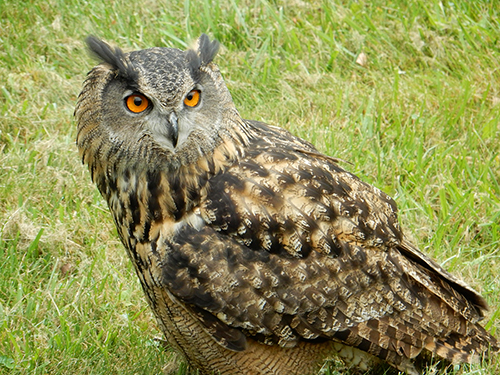In Part 1 of “A Magnificent Obsession,” we began an investigation of why we humans are so fascinated with wildlife. In Part 2 we continued our investigation, which expanded to the present blog. Herewith, we conclude our investigation with a final source of fascination, “Entertainment with Purpose,” before briefly summarizing our findings.
Entertainment with Purpose
From childhood to today, undoubtedly many of Estuary magazine’s readers, like me, have fond memories of visiting zoos and aquariums and being entertained by the variety of captive animals and their antics on display. Over time the animal enclosures at these facilities have become more “natural” and the objectives of the organizations that operate the zoos and aquariums have changed in favor of becoming protectors of rare species that are facing extinction. A number of large zoos and aquariums—for example, in the United States, the Bronx Zoo (NY), the San Diego Zoo and San Diego Zoo Safari Park (CA), the Mystic Aquarium (CT), the Birch Aquarium (CA), and the Atlanta Aquarium (GA)—now conduct important research and reproductive programs for threatened wildlife species. Your membership and admission fees, while providing entertainment for you and your family, also support the species research and preservation initiatives of these facilities.

Great Horned Owl
Image Credit: Ralph Wood
Hands down, however, the largest avocation in this category of “entertainment with purpose” is birdwatching. In the 2016 National Fish and Wildlife Service census, 88% of “around-the-home” wildlife watchers were bird watchers, and 72% of “away-from-home” wildlife watchers were bird watchers. Quite simply, humans are beguiled by birds, their colorful plumage, their sounds, and their flight, foraging, hunting, and survival skills. A must-see demonstration of raptors and their acrobatics is the falconry show put on by Brian Bradley of Skyhunters in Flight. [3] Shown here is a picture of one of Brian’s fearsome “sky hunters,” a great horned owl, which had just devoured a whole mouse in less than the blink of an eye.
Adding to these sources of charisma are the widespread geographical distribution of birds and the fact that we in the Connecticut River Valley can observe a crucial part of a bird’s lifecycle, which may involve migration from wintering sites, mating, nesting, raising young, and migration back to their wintering sites, if they don’t winter in place. We even find interesting birds in urban areas, which offer buildings, parks, and cemeteries as habitats. Thanks to the leading efforts of many local, state, and national ornithological and conservation organizations, including those that promote backyard bird feeding, one does not have to travel very far to find important bird areas that are habitat to a variety of bird species. And, of course, while out in nature, the birder is treated to sights of other wildlife and plant life.
The casual birder can start with a fairly inexpensive pair of binoculars and a smart-phone bird application, which relies on advanced image identification techniques and recorded bird sounds to hasten identification. (For example, see the Cornell Ornithology Lab’s application Merlin, available free for both IOS and Android smart phones.) Our fall 2020 issue of Estuary magazine features a story about Old Lyme, Connecticut, resident Roger Tory Peterson, whose field guides to birds pioneered his witness-line highlighting of key features to aid identification and became world-wide best sellers because of his extensive knowledge, attention to detail, photographs, and artistry.
Once infected with the fascination of birding, causal birders will usually purchase more expensive optical equipment, which may include top-of-the-line binoculars, a spotting telescope, a high-resolution camera with powerful telephoto lens, and a variety of footwear, hats, and clothing made for birders for day-long outings. Our formerly casual birders will begin to record their observations, participate in organized local and regional bird-counting events (e.g., the Backyard Bird Count, the Christmas Bird Count, a state-specific Breeding Bird Atlas), and send their records to a central database, such as e-Bird that is maintained by the Cornell Ornithology Lab. To complete the spanning from entertainment to purpose, our birders may even, after some training, become bird banders and collect still more data on bird populations. They may also gain enough self-confidence in their birding competency to start leading bird-watching walks for others. Finally, they might take advantage of several organized trips—day, overnight, or multiple days—to observe exotic bird species in special habitats.
Counting bird species is a prominent example of citizen science, in which non-scientists gather huge amounts of data that help conservation scientists conduct their research investigations. Thanks to volunteer-collected bird counts, scientists at the Cornell Ornithology Lab, which in March 2018 tallied the 500 millionth record in the e-Bird database, were able to determine that the US bird population has declined by almost 30% in the last 50 years. An article on the implications of this shocking finding for the CT River watershed appeared in the summer 2020 issue of Estuary magazine. Where Have All the Birds Gone?
Tentative Conclusions
In the three installments of this blog, we have explored some underpinnings of our human fascination with wildlife. Beginning with what we know about our ancestors’ pragmatic need for wildlife watching, that is, to eat or to be eaten, we have come full circle to the pragmatism of today’s wildlife fascination that is driven by our desire to preserve the wildlife species (and their habitats) that we see in addition to being entertained by the act of watching. Along the way, we have also touched on some other sources of our fascination with wildlife: our evolutionary heritage that derives from wildlife, curiosity stoked by being able to observe “living fossils,” by the emotions of awe, love of beauty, and empathy, and by science—our relentless quest for understanding our environment and how to protect it from human encroachment.
[3] Brian Bradley, Skyhunters in Flight, brian@skyhuntersinflight.com

